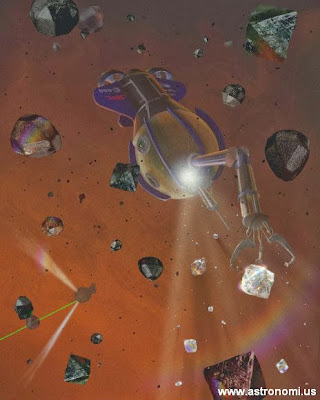NEBULA
NEBULAE
If we translate the Latin word ‘nebula’, it would simply
mean ‘cloud’. The nebula that we are about to talk about, however, is so much
more than just a cloud. A nebula is an interstellar cloud in outer space that
is made up of dust, hydrogen and helium gas, and plasma. It is formed when
portions of the interstellar medium collapse and clump together due to the
gravitational attraction of the particles that comprise them.
Many nebulae or stars form from the gravitational collapse
of gas in the interstellar medium or ISM. As the material collapses under its
own weight, massive stars may form in the center, and their ultraviolet
radiation ionizes the surrounding gas, making it visible at optical
wavelengths. Examples of these types of nebulae are the Rosette Nebula and the
Pelican Nebula.
1. Classical types
Objects named nebulae belong to four major groups. Before
their nature was understood, galaxies ("spiral nebulae") and star
clusters too distant to be resolved as stars were also classified as nebulae,
but no longer are.
H II regions, large diffuse nebulae containing ionized
hydrogen
Planetary nebulae
Supernova remnant (e.g., Crab Nebula)
2. Diffuse nebulae
Most nebulae can be described as diffuse nebulae, which
means that they are extended and contain no well-defined boundaries.In visible
light these nebulae may be divided into emission and reflection nebulae.
Emission nebulae emit spectral line radiation from ionized gas (mostly ionized
hydrogen);[16] they are often called HII regions (the term "HII" is
used in professional astronomy to refer to ionized hydrogen).
Reflection nebulae themselves do not emit significant
amounts of visible light, but are near stars and reflect light from them.[16]
Similar nebulae not illuminated by stars do not exhibit visible radiation, but
may be detected as opaque clouds blocking light from luminous objects behind
them; they are called "dark nebulae".[16]
Although these nebulae have different visibility at optical
wavelengths, they are all bright sources of infrared emission, chiefly from
dust within the nebulae.[16]
3. Planetary nebulae
Planetary nebulae form from the gaseous shells that are
ejected from low-mass asymptotic giant branch stars when they transform into
white dwarfs.[16] They are emission nebulae with spectra similar to those of
emission nebulae found in star formation regions.[16] Technically they are HII
regions, because most hydrogen will be ionized, but they are denser and more
compact than the nebulae in star formation regions.[16] Planetary nebulae were
given their name by the first astronomical observers who became able to
distinguish them from planets, who tended to confuse them with planets, of more
interest to them. Our Sun is expected to spawn a planetary nebula about 12
billion years after its formation.[17]
4. Protoplanetary nebula
A protoplanetary nebula (PPN) is an astronomical object
which is at the short-lived episode during a star's rapid stellar evolution
between the late asymptotic giant branch (LAGB) phase and the following
planetary nebula (PN) phase.[18] During the AGB phase, the star undergoes mass
loss, emitting a circumstellar shell of hydrogen gas. When this phase comes to
an end, the star enters the PPN phase.
The PPN is energized by the central star, causing it to emit
strong infrared radiation and become a reflection nebula. Collaminated stellar
winds from the central star shape and shock the shell into an axially symmetric
form, while producing a fast moving molecular wind.[19] The exact point when a
PPN becomes a planetary nebula (PN) is defined by the temperature of the
central star. The PPN phase continues until the central star reaches a
temperature of 30,000 K, after which is it hot enough to ionize the surrounding
gas.[20]
5. supernove nebulae
A supernova occurs when a high-mass star reaches the end of
its life. When nuclear fusion in the core of the star stops, the star
collapses. The gas falling inward either rebounds or gets so strongly heated
that it expands outwards from the core, thus causing the star to explode.[16]
The expanding shell of gas forms a supernova remnant, a special diffuse
nebula.[16] Although much of the optical and X-ray emission from supernova
remnants originates from ionized gas, a great amount of the radio emission is a
form of non-thermal emission called synchrotron emission.[16] This emission
originates from high-velocity electrons oscillating within magnetic fields.






Comments
Post a Comment